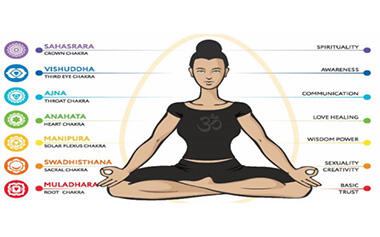Introduction to Kundalini Yoga
Kundalini Yoga or Yoga of awareness is actually an intense form of yoga that helps to develop mental, emotional and spiritual balance by the practice of exercises, proper breathing and meditating and by chanting mantras. Derived from its traditional civilization in India it has found increase acceptance in the western world due to its holistic nature in its management of health. Kundalini Yoga offers explicit directions in this form of Yoga which focuses on a mysterious energy known as the Kundalini, located at the root chakra. When this energy has to be switched on, it passes through the chakra or the vortex which is the energy center of the body thus leading to an overall balance within a person's physical as well as psychological make up.
The Literature Review on Kundalini Yoga and its impact on Mental Health
Depression anxiety and stress are some of the things that millions of people continue to struggle with in this world. It has been widely observed in most traditional models of operations that there is little attention paid to the causes of the problems. It is actually here that Kundalini Yoga delivers because it programs for the entire picture. Different from other styles of yoga that might focus on the body, KY attacks the mind-body relationship individually offering ways to approach conditions of the mind and spirit.
Credible testeronial proofs and empirical datum substantiate the mental health advantages of Kundalini Yoga. Most of the practitioners depict decreased anxiety and stress, better mood, and improved psychological armor. Kundalini Yoga exercises have been found to reduce cortisol levels in people, which makes it easy to explain why people who practice this type of yoga have a good feeling after practicing it.
There is a variety of techniques used in Kundalini Yoga, which include the following;
Kundalini Yoga uses a number of techniques that primarily aims to enhance a person's psychological welfare. These include:
Kriyas: Intended to accomplish a designated goal for a particular session, comprising a series of postures and breaths used in conjunction with vocalization.
Pranayama: Some special procedures that assist in achieving mental concentration and in regulating the required vital energy. For instance, the Breath of Fire is an article of constructive breathing, which includes a fast paced and synchronous breath cycle that enhances vitality and frees the heart from restrictions.
Meditation: Some calming processes such as mindfulness which involves clearing head, regulating emotions, and increasing self-identity. Reciting of some mantras during meditation also produces sound vibrations that help to change some aspects of the brain.
Mudras: Stances which affect the distribution of what might be considered Qi in the body and which can be used to amplify certain mental conditions.
Bandhas: Physical postures that channel energy through the main wheel of energy in the body beneficial to the mind and spirit.
Case Studies and Testimonials
Today, Kundalini Yoga has become loved by many people due to the mental health impact that is offered by the process. For instance, Sarah a corporate executive with stress and insomnia problems learnt that Kundalini Yoga was helpful in reducing her anxiety levels and also in managing her sleep. Likewise, for experiencing depression, he said that breath work and meditation helped him to have engagement with the inside self and not to be dominated with the dark side thoughts.
Just as the testimonials offered by her followers reveal the growth aspect of Kundalini Yoga. Apart from single examples, community assistance and group services provide a person with a feeling of being with others, a crucial factor ignoring which is the main reason for many mental conditions.
Scientific Contribution and Research Artikel
Research on Kundalini Yoga is rather limited to date, but based on existing literature, realizations often seem quite encouraging. Several controlled investigations have tend to point out that methods such as Kundalini Yoga reduces symptoms of generalized anxiety disorder (GAD) and depression better than certain medications. The effect they found on neuroplasticity… referring to the ability of the brain to rewire its connections, long-term focused advantages of Kundalini Yoga for mental health outcomes could be inferred.
A well known study done at the Harvard University analysed influence of a, 12-week Kundalini Yoga intervention on the people experiencing high stress. The outcome revealed the stress level was significantly lowered, emotional regulation was bettered, and there was a record of enhanced mental focus.
Conclusion: An Avenue for Inclusive Mental Care
Kundalini Yoga presents an especially comprehensive and holistic view of mental states and mental disorders that is not limited to searching for disease causes and symptoms alone. This makes it to be the package of teaching physical exercise, breath control, meditation and chanting in order to offer the balance of life styles, control of stress, anxiety, and enhancing of the emotional well-being. As more studies are conducted on the practice of Kundalini Yoga, its application in mental health services is going to receive further more recognition. So, for all the people who want the progressive and comprehensive approach to the better mental health, the Kundalini Yoga can be suggested as the auspicious and potent change.
 EN
EN
 AR
AR BG
BG HR
HR CS
CS DA
DA NL
NL FI
FI FR
FR DE
DE EL
EL IT
IT NO
NO PL
PL PT
PT RO
RO RU
RU ES
ES SV
SV CA
CA TL
TL ID
ID LV
LV LT
LT SR
SR SK
SK UK
UK SQ
SQ ET
ET GL
GL HU
HU TR
TR FA
FA MS
MS GA
GA CY
CY IS
IS KA
KA
